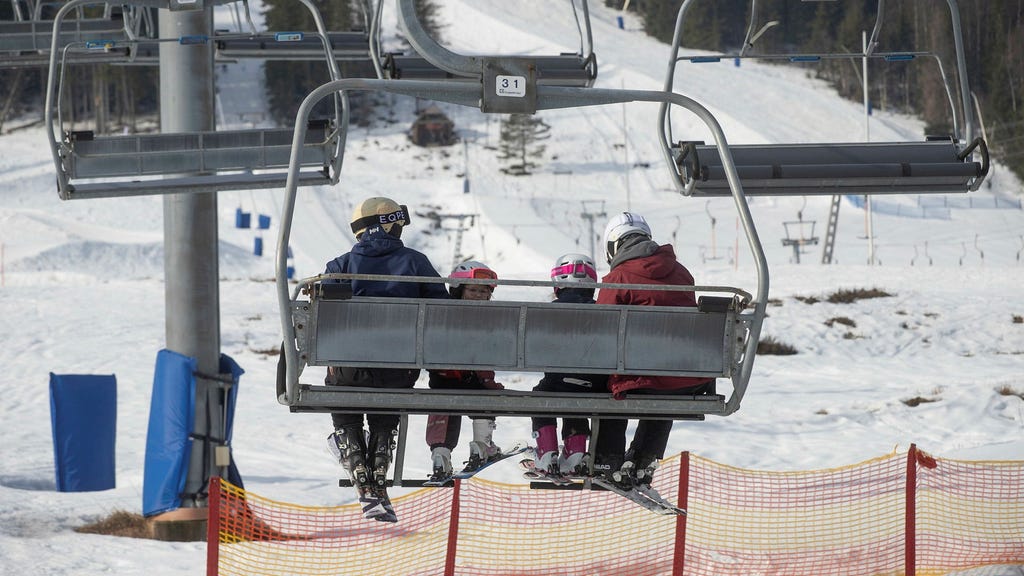Paragraph 1: A Shift in Skiing Styles and Safety Concerns
Swedish ski slopes are witnessing a transformation in skiing styles, with speeds increasing and carving turns becoming more prevalent. This evolution presents new safety challenges, particularly for families with young children. Traditionally, skiers adhered to the fall line, but modern techniques involve dynamic carving, demanding greater skill and awareness. This faster, more agile approach to skiing necessitates a reassessment of safety protocols, especially concerning vulnerable groups like children. The increased speed and maneuverability of skiers raise concerns about potential collisions and accidents, prompting ski resorts to implement stricter safety regulations.
Paragraph 2: The Ban on Child Carriers: A Preemptive Safety Measure
In response to these evolving conditions, the Swedish Lift Facilities Organization (SLAO) implemented a new rule prohibiting skiing with children in carriers on the back or front. This decision, though met with some resistance, stems from a proactive approach to safety. While no specific statistics exist on accidents involving children in carriers, SLAO emphasizes the inherent risks. The possibility of falls or collisions, regardless of a skier’s perceived proficiency, poses a significant threat to a child’s safety. The ban aims to eliminate this risk entirely. The decision acknowledges the increased speed and density of skiers on modern slopes, making such accidents more likely.
Paragraph 3: Implementing the Ban: Industry-Wide Consensus and Public Support
Prior to the outright ban, several resorts had individual recommendations or prohibitions against child carriers, reflecting a growing awareness of the issue. The SLAO’s decision formalizes this practice, creating a consistent rule across all Swedish ski resorts. This standardization clarifies expectations for skiers and promotes a safer environment for everyone. Magnus Noppa, CEO of SLAO, notes that the response to the ban has been overwhelmingly positive, with the vast majority of skiers recognizing its logic and importance. This broad public support reinforces the notion that safety should be the paramount concern on the slopes.
Paragraph 4: Addressing Counterarguments and Alternative Options:
Addressing the concerns of a small minority who view the ban as a restriction on family activities, Noppa emphasizes the availability of alternative options. For those wishing to enjoy the mountain environment with their children, touring skis and lifts remain accessible. However, carrying a child while using alpine skis is strictly prohibited, both on the slopes and in lifts. This distinction underscores the specific risks associated with downhill skiing. Furthermore, resorts encourage the use of designated childcare facilities, allowing parents to enjoy skiing while their children are supervised in a safe environment.
Paragraph 5: Snow Conditions and Resort Traffic:
Despite challenging snow conditions in some areas due to fluctuating temperatures, Swedish ski resorts are experiencing high visitor numbers, a trend expected to continue until mid-January. Many resorts have relied on snowmaking to maintain optimal slope conditions, demonstrating the industry’s commitment to providing quality skiing experiences. The anticipated arrival of colder weather promises to improve natural snow cover, further enhancing the skiing environment. This influx of visitors highlights the popularity of skiing in Sweden and the importance of maintaining rigorous safety standards.
Paragraph 6: Looking Ahead: Weather Forecasts and Continued Emphasis on Safety
The Swedish Meteorological and Hydrological Institute (SMHI) forecasts colder temperatures across the country, bringing the promise of improved snow conditions, especially in northern regions. While some areas may experience mixed precipitation, the overall trend points towards more favorable conditions for winter sports. As the ski season progresses, SLAO continues to emphasize the importance of safety and encourages all skiers to familiarize themselves with the rules and guidelines outlined in their “Lilla gula” (Little Yellow) booklet. This resource provides valuable information on safe skiing practices and promotes a culture of responsibility on the slopes. The combination of improved snow conditions and a continued focus on safety ensures a positive and enjoyable experience for all winter sports enthusiasts.














